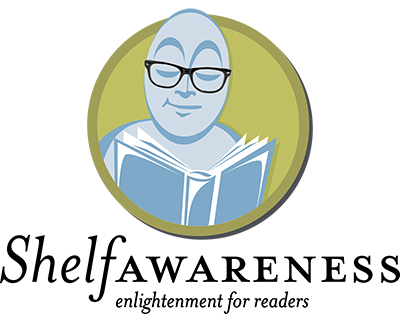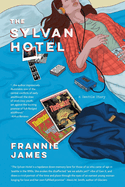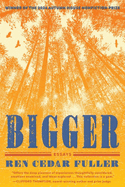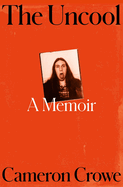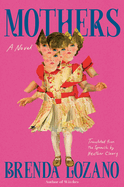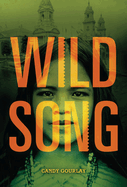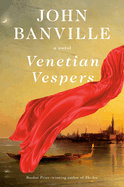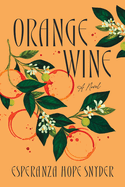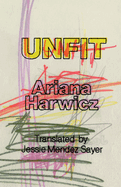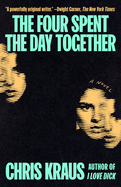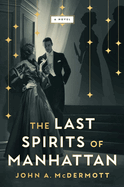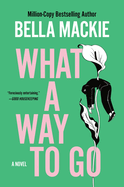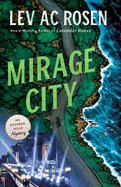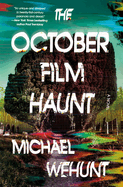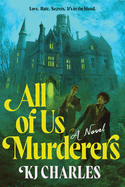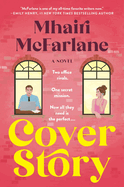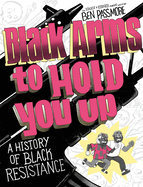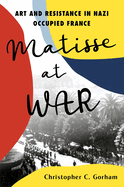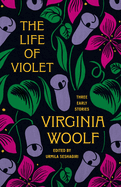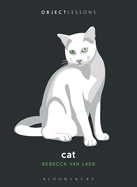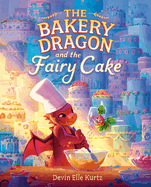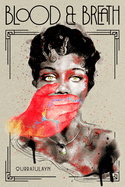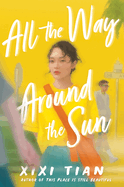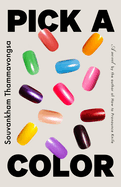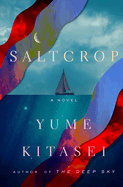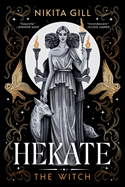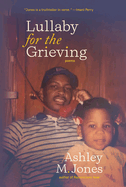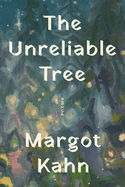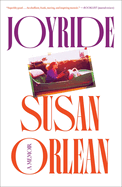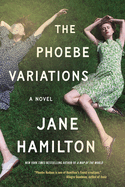Friday, October 31, 2025
This week we invite you to wander A Gallery of Cats, Ruth Brown's "immersive and whimsical" museum in which fuzzy felines pay homage to famous artworks. Or, perhaps, traverse essayist Ren Cedar Fuller's family history with the "perceptive... openhearted" perspective of Bigger. Maybe you'd rather reminisce about Seattle's grunge roots through the "captivating whirlwind" of a '90s-era clerk's coming of age in Frannie James's The Sylvan Hotel. Or reflect with Cameron Crowe on the "remarkable and moving" journey he made as a young, gawky teen to become a critically acclaimed music journalist and filmmaker in his memoir, The Uncool. All that and so much more is just one click away!
The Sylvan Hotel
by Frannie James
Set in the early 1990s, The Sylvan Hotel by Frannie James is a captivating whirlwind of drama that follows a recent college graduate as she navigates the "in-between" stage of her life. James also captures the Emerald City at the precipice of its evolution from a "pretty pit stop" with provincial sensibilities into a 21st-century metropolis. Cameos by Kurt and Courtney Love Cobain set a nostalgic backdrop for James's Seattle story.
Joann is a "somewhat preppy" 20-something Asian American working the swing shift as a front-desk agent at the "crown jewel" of Seattle hotels. The Sylvan Hotel hums with the hotel's energy and the lively characters who keep it running smoothly, including the coterie of valets and the housekeeping staff with their entertaining chatter over walkie-talkies. Friendship blossoms between Joann and Kathryn as they trade switchboard and front-desk duties. Then there's Robert, a chivalrous valet whose connection with Joann teeters thrillingly toward the romantic.
Kathryn and Robert view their hotel jobs as a temporary refuge, but Joann worries she'll never transition into her dream career in advertising. While the Sylvans navigate outrageous guest requests, readers are treated to a tour of beloved landmarks anchoring Seattle's history, such as the iconic Pike Place Market.
When tragedy strikes, it is the first of many storms Joann must weather as pieces of her "grown-up destiny" fall into place. The Sylvan Hotel is a fun, exuberant story of a young woman forming transformational connections in the most transitional of places. --Shahina Piyarali
Discover: Frannie James's novel is a captivating whirlwind of drama featuring a young Asian American woman working as a front-desk agent at an upscale Seattle hotel in the early 1990s.
Mothers
by Brenda Lozano, transl. by Heather Cleary
Mexican writer Brenda Lozano and translator Heather Cleary reunite after Witches for Mothers, about two women bound together by their temporarily overlapping motherhoods. On January 22, 1946, in Mexico City's wealthy Colonia Juárez, Gloria Felipe leaves her two-year-old daughter, Gloria Miranda Felipe, for 16 minutes to play with a new neighbor in their apartment building's courtyard, and the child vanishes. In nearby Colonia Guerrero, Nuria Valencia, who "had been trying for years to get pregnant with her husband, Martín Fernández Mendía," has just adopted a two-year-old child they've named Agustina after Martín's mother. For seven months and three weeks, Gloria becomes too incapacitated to mother--"I want to be kidnapped so you'll pay attention to me," one of her four other children poignantly begs. For seven months and three weeks, Nuria basks in mothering Agustina while Martín will marvel at the ease of being "a good father."
What might initially seem familiar, even predictable, is spectacularly offset by Lozano's sly narrator: "I wouldn't want you thinking I was some male omniscient narrator," she starts. Her paragraph-long self-introduction is an utter marvel, so succinct, erudite, demanding: "I'm not... the voice of a white male saying this is like this and that is like that and these characters are going to say blah-blah... and don't think I'm some generic woman, either: I'm Mexican, which means my words dance the jarabe tapatío; don't expect me to talk like a Miami anchorwoman." Lozano brilliantly interrogates parenthood, sexist medicine, desensitizing entitlement, and women's independence--exposing various versions to every story. --Terry Hong
Discover: Brenda Lozano's Mothers is a superb, wrenching, subversive examination of motherhood.
Venetian Vespers
by John Banville
That the canals in Venice may not always be ambrosial is the least of Evelyn Dolman's concerns in Venetian Vespers, a novel by John Banville (The Singularities) that is part thriller, part ghost story, and a satisfyingly ruthless chess match. Englishman Evelyn calls himself a "man of letters" who "had a middling reputation in the period coming to be known, in our increasingly Frenchified age, as the fin de siècle, that is, the 1890s." His modest goal was "to be a lord of language who in time would be placed among the immortals." Instead, he's "a Grub Street hack" who writes travel guides. Then he meets American heiress Laura Rensselaer, daughter of an oil magnate who dies shortly after their marriage. That's when Evelyn learns that Laura has been disinherited. To ease the pain, she suggests a belated honeymoon in Venice.
Evelyn is in for more surprises in this ingeniously constructed work. First, he and Laura have sex exactly once before marriage, when he discovers that Laura is "far more experienced than I." Then, after they've settled into their Venice palazzo, he meets Freddie FitzHerbert, who claims to recognize Evelyn from their public-school days, and Freddie's sister, Francesca, with whom Evelyn falls "instantly, irresistibly" in love. A drunk, frustrated Evelyn sexually assaults Laura, only to find the next morning that Laura has disappeared. The plot gets more intricate and unpredictable as it rushes toward its clever ending. Mix refined prose with sordid machinations, and the result is bound to be tempting, as is the case with this marvelous novel. --Michael Magras, freelance book reviewer
Discover: John Banville's Venetian Vespers is a satisfyingly ruthless chess match about a hack English writer, his heiress wife, and the mysterious siblings they meet during their Venice honeymoon.
Soyangri Book Kitchen
by Kim Jee Hye, transl. by Shanna Tan
Kim Jee Hye, who runs an independent bookstore in Korea, makes her authorial debut with the soothing Soyangri Book Kitchen, where strangers arrive unsettled and leave with bodies and souls nourished and restored. Singaporean polyglot Shanna Tan, fast becoming the translator for K-healing titles, provides another warm rendering.
Seoul businesswoman Yoojin never imagined that, at 32, she'd be running the Soyangri Book Kitchen, a bookshop, café/event space, guesthouse complex, so far from the city. Feeling burned out, she'd ventured to rural Soyangri to watch a mountain sunrise, overheard two men in a waffle restaurant discussing an abandoned piece of land, and impulsively bought the property. Ten months later, Yoojin, having gathered an already devoted staff, is ready for opening: "May you find encouragement and comfort in our kitchen of books," their sign persuades. The Kitchen is blessed with build-and-they-will-come success when its inaugural visitor serendipitously turns out to be the previous landowner's granddaughter, an exhausted famous singer longing for her beloved late grandmother. A high-powered lawyer confronting a serious medical issue is their first month-long "bookstay" guest. Two childhood soul mates reunite. A young man mourning his late mother confronts his fear for his "sharp businessman" father.
In her author's note, Kim reveals her own quitting and resetting, her craving for kinship, her reclaiming "the happy memories of [her] life." In writing the kind of reassuring novel she wishes she had in her 30s, Kim invites readers to imagine the panoramic views and delectable meals, appreciate inspiring conversations, and make nurturing connections--all while reveling in the transformative enlightenments revealed in Yoojin's thoughtfully curated books. --Terry Hong
Discover: Korean debut novelist Kim Jee Hye's Soyangri Book Kitchen offers gentle, healing nourishment for both body and soul.
Orange Wine
by Esperanza Hope Snyder
Set in early 20th-century Colombia, Orange Wine, Esperanza Hope Snyder's debut novel, offers timeless themes of deception, love, loyalty, and hope.
Inés de la Rota, an inspiring protagonist who boldly commits to her path, narrates her story in a straightforward style. She is a bright young woman growing up when tradition and obedience to the Catholic Church discourages dreams. During her privileged childhood as one of four daughters among the rose gardens of her family's mansion in Paipa, Colombia, Inés learns poetry and refines her talent as an artist. But her mother also teaches her that "prettiness doesn't last forever." Urged to marry, Inés chooses a dashing, narcissistic musician who leaves her with two children and his debts.
Inés relates her pragmatic recovery from this defeat, which includes defying her sisters and the Church, all of whom scorn her nontraditional choices. She finds true love with devoted Régulo, but because she is a married woman, living with him would destroy his reputation. Nonetheless, their union brings joy, and opportunities for Inés's art to flourish. Magical realism infuses Inés's story; after she dreams of orange wine "slightly bitter on [her] tongue" but then giving "a sense of well-being," the couple crafts the drink with fruit from Régulo's family's trees. Régulo reveals that his clairvoyant ancestors predicted a woman with a "pure heart" would create a healing nectar from the oranges. Its success is a lovely metaphor for Inés's persistence in turning life's bitterness into sweetness. --Cheryl McKeon, Book House of Stuyvesant Plaza, Albany, N.Y.
Discover: A creative young woman in early 20th-century Colombia defies tradition to express her talents and find true happiness.
Unfit
by Ariana Harwicz, transl. by Jessie Mendez Sayer
Argentine writer Ariana Harwicz's Unfit seems spare at just over 100 pages but immediately reveals itself as an immersive fever dream. Tight typography and minimal kerning densely pack every page, a single paragraph often covers multiple pages, and sentences jump temporally and narratively without warning. Harwicz masterfully presents controlled chaos, capturing the intense desperation of a mother separated from her young children.
Lisa, the narrator, laments she can only see her twin sons "once a month in a supervised place, getting even less than terrorists' families." She's allowed "an hour and a half to be a mother." She's been "accused of maladaptive behavior, intimidation, and subjecting [her] spouse to harassment," with 150 letters supporting the allegations against her. That she's an Argentine migrant to France provides her powerful in-laws convenient reason to damn her. When the relentless separation becomes unbearable, Lisa sets her in-laws' farmyard ablaze, creating an opportunity to grab J and E from the house: "I came to rescue you and take you on an adventure," she convinces them. "I arrived in the middle of the night to save you from the terrible smoke.... I arrived just in time." And now they're on the run, without plans or resources.
Harwicz (Die, My Love) unblinkingly examines love and motherhood through the lens of a woman pushed over the brink by frenzied desolation. Lisa is a foreigner, an outcast, a discarded parent legally deemed unnecessary. In her harrowing situation, she has little else left to lose in attempting to reclaim the vastness of what she's lost. --Terry Hong
Discover: In Unfit, Argentine writer Ariana Harwicz presents a raw, frenzied portrait of a woman desperate to reunite with her young twin sons.
The Four Spent the Day Together
by Chris Kraus
In The Four Spent the Day Together, author and critic Chris Kraus (I Love Dick) blends autofiction, true crime, and social criticism in a multilayered, provocative, and thoughtful portrait of art, aspiration, and addiction in a splintered and devolving United States.
This genre-bending novel comprises three linked but discrete parts that correspond to specific periods in Kraus's life. The first, "Milford," recounts her early childhood in blue-collar Milford, Conn., where a young Catt Greene, possessed of a keen artistic and critical mind, is perpetually at odds with her parents and developmentally disabled sister and drifts into a troubled adolescence. The second part, "Balsam," picks up Catt's life decades later, when she has become a successful writer, in Los Angeles and in Balsam in northern Minnesota. After her cult classic work of autofiction, I Love Dick, is made into a TV series, Catt struggles with an Internet culture that seems bent on canceling her and becomes estranged from her husband, Paul, who is sliding back into addiction after a period of sobriety. The last part, "Harding," dissects a crime with which Catt becomes obsessed, the drug-fueled 2019 murder of a man by three teenagers in an Iron Range town after they all spent the day together.
Kraus's gift is her ability to blend these three disparate narratives into a seamless whole in which readers feel they are experiencing the events with her in real time. Through her impressive control of and attention to detail, Kraus offers a panoramic view of a societal landscape that has become harsher over time, especially for the most vulnerable. --Debra Ginsberg, author and freelance editor
Discover: This work of autofiction from author and critic Chris Kraus is a provocative and thoughtful portrait of addiction, art, and a splintered United States.
The Last Spirits of Manhattan
by John A. McDermott
Old Hollywood meets Old New York in The Last Spirits of Manhattan, John A. McDermott's wildly inventive debut novel of ghosts, grudges, and Alfred Hitchcock.
It's February 1956, and Superior, Wisconsin's Carolyn Banks wants more from life than marriage. To escape her boyfriend's imminent proposal, she flees to New York, where she stays with her Aunt Bella and mulls over her future. Meanwhile, Pete Donoff, a copywriter for a Manhattan ad agency, has been tasked with fulfilling a request from a famous client: "It was Mr. Hitchcock's dream to have his cocktail party in a verified haunted house." The house Pete winds up renting belongs to Aunt Bella: it was the residence of her now-deceased aunts. Aunt Bella lets Carolyn have her party invitation but cautions that one of the deceased aunts is "still in the house."
Although McDermott's author's note reports that the party at the novel's center is based on a real-life event, The Last Spirits of Manhattan is a lavish work of imagination. Among the partygoers are Hitchcock's wife, Alma, who routinely dispenses clear-eyed observations; New Yorker cartoonist Charles Addams and his possibly duplicitous wife, Barbara; and actor Henry Fonda, who faces off against his late wife--one of several dyspeptic ghosts who crash the party. The novel's roving perspective, shared by most of the above-named human partygoers as well as the ghosts, dilutes the focus of a story that belongs to Carolyn and Pete, whose scenes together nonetheless deliver the fizzy, flirty banter of a golden-age screwball comedy. --Nell Beram, author and freelance writer
Discover: In this lavish work of imagination, several ghosts crash a Manhattan party held at a haunted house and hosted by none other than Alfred Hitchcock.
Mystery & Thriller
What a Way to Go
by Bella Mackie
One mystery centered on intrafamilial murder wasn't enough for Bella Mackie, who follows her first novel, How to Kill Your Family, with What a Way to Go, a hilariously bruising riff on the lengths people will go to justify appalling behavior.
The novel begins with the womanizing and underhanded Anthony Wistern's beyond-the-grave reflections on his recent death at his 60th birthday party, held at his country house in the Cotswolds. What Anthony doesn't know is what killed him. Also assuming narrating duties is his dry-eyed and very much alive wife, Olivia, who embraces the widely accepted "accident" theory of Anthony's death. Not buying it is the novel's third narrator, the Sleuth, a 24-year-old YouTuber who posts about Anthony's death; as she notes, "A rich, healthy man like that doesn't just fall into a lake onto a conveniently placed spike while hundreds of people roam about."
Anthony, Olivia, and the Sleuth regard all four Wistern children, ages 17 to 28, with suspicion; each stands to inherit following Anthony's death, and, as Anthony muses, each had a distinct reason to resent him. Meanwhile, Anthony and the Sleuth haven't ruled out Olivia as a suspect. Mackie sends up both the entitled (Olivia: for powerful people, "fixed lines can easily be bent, into enormous squiggles if necessary") and content-creator culture (the Sleuth: "Everything is content, even if it's not relevant"). If What a Way to Go dawdles a bit, well, readers can't expect people like Anthony and Olivia Wistern to be hurried, can they? --Nell Beram, author and freelance writer
Discover: The head of a wealthy family winds up dead at his Cotswolds country house in Bella Mackie's second mystery, a hilariously bruising riff on the lengths people will go to justify appalling behavior.
Mirage City
by Lev AC Rosen
Lev AC Rosen (Lavender House) homes in on the 1950s gay community, offering a fresh homage to noir and private detective novels in Mirage City, his fourth outing featuring copturned private investigator Evander "Andy" Mills.
After being caught in a raid on a gay bar and kicked out of the San Francisco police force, Andy formed a detective agency and now it's thriving. He's found love with Gene, a bartender and manager at the Ruby, the club above which Andy's apartment and office are located, and he has close friends. A member of the local Mattachine Society, a secret group that advocates for gay rights, hires Andy to find three members who have disappeared after skipping meetings. The case will be difficult, since members don't use real names or pose for photographs. The investigation takes Andy to Los Angeles, where he grew up and where his mother still lives. Though she calls him every year on his birthday, they haven't seen each other in seven years. Andy's search for clues leads him to a secretive gay motorcycle club, a wealthy family that has retreated to their enclave, and a psychiatric clinic.
Andy's feelings of being an outsider intensify in Los Angeles, a city he no longer knows, as he wrestles with whether to tell his mother he is gay. Rosen excels at depicting the LGBTQ+ community's struggle for rights in 1953 as it becomes more visible. His detailed sense of history echoes Joseph Hansen's groundbreaking Dave Brandstetter novels in this superb series. --Oline H. Cogdill, freelance reviewer
Discover: The fourth volume in Lev AC Rosen's superior series is a fresh homage to noir that delves into the LGBTQ+ community's struggle for their rights.
The October Film Haunt
by Michael Wehunt
A former horror film blogger and influencer finds herself in a sequel she never wanted in Michael Wehunt's skin-prickling The October Film Haunt. It has been 10 years since Jorie Stroud watched a horror film. Part of the trio known as the October Film Haunt, she and her friends toured cult movie locations to write up their creepy experiences on social media. But after they visited a graveyard featured in the obscure flick Proof of Demons, Jorie penned a controversial blog post that resulted in an Internet frenzy--and a girl's death. Now, Jorie lives in rural Vermont with her son, Oliver, struggling to finally be free of the past. Then a VHS tape arrives that indicates the enigmatic and elusive Hélène Enriquez, director of Proof of Demons, may be filming a sequel with the help of her obsessive devotees, whom Jorie calls the "Rickies." And Jorie is cast as the final girl.
This is horror writing at its most complex, variegated, and lyrical. Wehunt's story is a creative mash-up of classic horror cinema and its beloved tropes. It employs clever narrative interludes (Wikipedia entries, blog posts, e-mails, etc.) to hammer together the plot's intricate scaffolding and features a dimensional supporting cast with their own stories to tell. A twisted nightmare fit for the 21st century, The October Film Haunt will delight hardcore horror fans with its heavy dread, innovative prose, and delightful dialogue. --Peggy Kurkowski, book reviewer in Denver
Discover: A former horror movie influencer comes face to face with the demon(s) she created in this complex, layered, thoroughly imagined take on film, reality, and the blurry line in between.
All of Us Murderers
by KJ Charles
In the gay, gothic, murderous house-party novel All of Us Murderers, a soft, bumbling children's book author finds himself cloistered in a remote English estate, surrounded by a pack of people he'd rather avoid and entered into an inheritance game he doesn't want to play, all while encountering ghostly figures and oppressive mist. KJ Charles (The Secret Lives of Country Gentlemen) introduces readers to Zeb Wyckham, who agrees to visit his eccentric relative, Wynn, after a difficult year in which Zeb lost his boyfriend and (yet another) job. Upon arrival, Zeb is dismayed to discover his dysfunctional family in attendance--and his ex, Gideon, on staff at Lackaday House, Wynn's estate.
Tensions escalate when the guests learn Wynn intends for them to woo his young ward, with the winner marrying her and claiming the family fortune. Events go from unpleasant to unsettling as the party encounters disturbances that seem to be pulled directly from a shelf of lurid novels, and escalate from bad to worse as their numbers dwindle. Meanwhile, Charles reveals more of Zeb's family history, and Zeb wars with feelings of insufficiency and shame, fighting to stay true to himself. But the sinister shadows circle ever closer, and Zeb and Gideon revisit past regrets with tender honesty while wondering if they can find their way back to each other--and out of Lackaday House. In a novel full of eerie happenings and unsavory characters, Charles strikes the right balance of sweetness with the pair's rekindled romance, making this a perfect read for spooky season and beyond. --Kristen Coates, editor and freelance reviewer
Discover: With All of Us Murderers, KJ Charles offers a spooky, insular gothic novel about family secrets and murderous plots.
Science Fiction & Fantasy
Cinder House
by Freya Marske
A murdered young woman embodies her family home in Cinder House, a queer gothic novella by Freya Marske (A Marvellous Light) that retells "Cinderella." After her stepmother poisons Ella and her father, Ella finds her spirit attached to the gloomy house she grew up in. Her stepfamily quickly discovers that Ella feels pain caused by damage to the building and they use this to force her to perform household labor for years. Even in death, Ella has no choice but to continue her miserable, lonely existence.
One night, a tile falls from the roof and Ella finds that she can use it to extend her tether. She meets a fairy in town with whom she strikes up an acquaintance and, eventually, a bargain. For three nights, she will be able to attend the prince's ball. There she meets the prince, a young man with a curse of his own.
Marske's setting does much of the work here; the house, Ella's nighttime excursions, and literal skeletons in the closet intensify the mood. Marske's characterizations deserve praise as well, however. Ella's relatives are villainous in distinct ways, illustrating how one need not take an active role in torment to cause it and how the same person can be both victim and perpetrator. The unconventional romance and ending may not be what readers expect, but Marske doesn't take any shortcuts along the way to resolving the seemingly insurmountable obstacles she places before her characters.
This novella is perfect for readers who enjoy T. Kingfisher's dark fairytale fiction and crave inventive, hard-won happily-ever-afters. --Suzanne Krohn, librarian
Discover: A young woman embodies her family home and strives for a happy ending in this queer, gothic retelling of "Cinderella."
Romance
Cover Story
by Mhairi McFarlane
Mhairi McFarlane (Don't You Forget About Me; Mad About You) is known for her yearning, slow-burn love stories. Her enemies-to-lovers workplace romance, Cover Story, however, jumps straight into an antagonism sure to please fans of Sally Thorne's The Hating Game or Rachel Lynn Solomon's The Ex Talk.
Isabel "Bel" Macauley, host of an award-winning podcast, is thrilled to have landed a job at the Manchester, England, office of a major newspaper. She is less thrilled to learn that they are about to get a new intern, after her poor experience with the last one. Astonishingly, the intern is not a college student but a 30-something former finance bro named Connor Adams, who is looking to completely change career paths.
Chapters alternating between Bel and Connor convey their hilarious antipathy as they consistently interpret each other's actions in the worst possible light. When Connor accidentally bumps into Bel outside of work, he doesn't realize she's undercover on a story. After he greets her, Bel abruptly claims him as her boyfriend to maintain her cover. The enemies must keep pretending to date or risk losing the chance to break one of the biggest scandals in Manchester's history.
Cover Story is pitch perfect, striking just the right balance between snarky humor and sincere compassion toward the victims of the story that Bel and Connor are investigating. The 21st-century urban setting is a fantastic backdrop for a gritty investigation, some light flirting, and the realization that a hated co-worker isn't so bad after all. --Jessica Howard, former bookseller, freelance book reviewer
Discover: In this romance set in Manchester, England, two journalists who hate each other are forced to investigate a story together.
Graphic Books
Black Arms to Hold You Up: A History of Black Resistance
by Ben Passmore
Ignatz and Eisner Award-winning Ben Passmore's scathing Black Arms to Hold You Up: A History of Black Resistance rightfully demands attention. With his meta-self as reluctant guide, Passmore graphically presents ideologies, movements, protests, and uprisings ignored and erased from classrooms, curricula, and even collective memory.
Passmore opens with his stand-in watching Philando Castile's killing on his phone. He's interrupted by his beret-wearing, dashiki-garbed father, who insists "you should be out there fighting for liberation too!" Dad arrives laden with two bags filled with "the canon of the Black radical tradition"--Malcolm, Assata, Garvey, and many more. "You're BLACK and I'm gonna make sure you know what that means." Ben's dismissal of Dad's "cocoa butter condescension" earns him a time-traveling head smack back to 1900s Louisiana.
Ben gets caught alongside activist Robert Charles in police crossfire, witnesses the Universal Negro Improvement Association founded by Marcus Garvey, meets Emmett Till's mother, hears Robert E. Williams advocating to "meet violence with violence!!!", and experiences the conflagratory implosion of radicalized MOVE. After ignoring Ben's protests of "Yo DAD, beam me up!" through centuries, Dad reappears to drag Ben into a Republic of New Afrika meeting with Black leaders living and dead.
Passmore predominantly creates in black-and-white, adding splashes of pinks and reds for electrifying emphasis. His illustrations mix detailed realism with simplified, cartoonish line drawings. Lettering variations, particularly onomatopoeic exclamations, affectingly enhance conversations and actions. Passmore impressively harnesses struggles, failures, tragedies, and triumphs, infused with both sarcasm and humor: history, he proves, is never neat. "It's finally time to wake up," Dad insists. He's definitely not addressing Ben alone. --Terry Hong
Discover: Ben Passmore's graphic Black Arms to Hold You Up: A History of Black Resistance irreverently, riotously chronicles a century-plus of history missing from classrooms and curricula.
Biography & Memoir
The Uncool: A Memoir
by Cameron Crowe
Director Cameron Crowe is best known for films such as Vanilla Sky, Say Anything..., and the semi-autobiographical Almost Famous, all of which feature iconic soundtracks. The critical role music plays in his film work is no accident. Indeed, the journalist turned director claims in his captivating memoir, "The marriage of film and music would soon be my favorite part of writing and directing films."
In The Uncool, Crowe depicts his unlikely journey from gawky high schooler in the 1970s to rock journalist chronicling some of the biggest and most influential musical acts of the day. Crowe's family is lovingly and poignantly depicted, including his sister Cathy, who died by suicide, indelibly marking the family.
Crowe's portrayal of the travels and interviews he did with musicians brings them and the era vibrantly alive. He recalls sitting down with legends Led Zeppelin, David Bowie, Joni Mitchell, the Eagles, and countless others. Crowe seemed to possess an extraordinary ability to connect with rock stars as well as other journalists (like Lester Bangs and Jann Wenner) not as gods or tastemakers, but as complex, flawed human beings. It was a skill infused with warmth and genuine curiosity that would later serve him well in the world of filmmaking.
This is a remarkable and moving memoir, with an engaging and unforgettable cast of characters, that will resonate well beyond fans of celebrated '70s music. The Uncool is a celebration of the passionate, often awkward and chaotic, journey to find one's place in the world. --Elizabeth DeNoma, executive editor, DeNoma Literary Services, Seattle, Wash.
Discover: The Uncool is a captivating insight into the tumultuous young rock critic days and development of director Cameron Crowe.
Matisse at War
by Christopher C. Gorham
During World War II, the French modernist artist Henri Matisse and his family remained in France, in defiance of the Nazi occupation, as Christopher C. Gorham reveals in the illuminating Matisse at War. By 1940, Matisse had made his home in Nice for 15 years, but when the Germans invaded France that year and took Paris, Nice became a "sliver of noisy normality between the Vichy state and Mussolini's Italy." Here, "Matisse tried to cope with the personal and national crises by creating." Gorham's insightful analysis of Matisse's works during the war are enlightening and his descriptions of Matisse's children and ex-wife and their roles within the French resistance emotionally ground the narrative. Even though Matisse and his wife, Amélie, separated in 1939, she protected his artwork from Nazi confiscation. His daughter, Marguerite, was imprisoned and severely tortured for her resistance work.
Gorham also sheds light on the bond between Matisse and Pablo Picasso, the "two giants of modernism" who "waged an elegant and knightly war" over their artistic beliefs. This is a free-flowing work that does not focus solely on Matisse (who was bedridden most of the time), but on friends, relatives, and other artists who chose to stick it out in France. Gorham argues that Matisse's life in Nice was not a deliberate escape from war, because "his whole family was separated" by the conflict. Matisse at War is an engaging tale of art and war. -- Peggy Kurkowski, book reviewer in Denver
Discover: Henri Matisse's fearless decision to stay in France under the Nazi occupation is the backdrop to this sweeping overview of heroic patriots and artists who remained to create art and resist tyranny.
Essays & Criticism
Bigger: Essays
by Ren Cedar Fuller
Ren Cedar Fuller's perceptive debut work, Bigger, offers nine linked autobiographical essays in which she seeks to see herself and family members more clearly by acknowledging disability, neurodivergence, and gender diversity.
In "Naming My Father," Fuller theorizes that her late father was "on the autism spectrum." He was exacting and emotionless--he spouted facts but never expressed love; he hit his four daughters and couldn't tell them apart unless they stood in height order. She intersperses notable moments from her father's past with key developments in the timeline of autism research. Sharing information was how her father connected with her, she recognized. "He wanted my world to be bigger, which is what we want for those we love."
Such expansiveness was an unexpected result of Fuller's child, Indigo, coming out as transgender and nonbinary. Her husband built Indigo a replica of the time-and-space-travel machine from Doctor Who one Christmas. The TARDIS--larger inside than outside--becomes a striking symbol of gender's breadth. Looking back, Fuller realizes that two of her sisters and their mother, who was raised in Ecuador by Scandinavian missionaries, are also gender-nonconforming.
Fuller is whimsical and self-deprecating as she details her health issues--a lazy eye and Sjögren's syndrome. Several pieces have novel structures: a checklist; a set of statements interrogated in subsequent indented paragraphs; and a faux scientific paper that traces the effects of colonialism and language loss on her mother from childhood through to her present-day dementia.
This openhearted memoir models how to explore and integrate with one's family history. --Rebecca Foster, freelance reviewer, proofreader, and blogger at Bookish Beck
Discover: Ren Cedar Fuller's questing, insightful essay collection documents instances of neurodivergence, disability, and gender diversity in her family.
The Life of Violet
by Virginia Woolf and Urmila Seshagiri, editor
Every literary scholar dreams of unearthing some long-hidden manuscript or offering a groundbreaking perspective on a well-established author. With The Life of Violet, a trio of early works by Virginia Woolf, Urmila Seshagiri has done both, and the result is a work of profound scholarship and modern entertainment. Seshagiri's preface starts with an exclamation and two questions: "Reader! Can Virginia Woolf make us burst out laughing? And does anything remain to be said about her career?" The answer is a resounding yes. Besides the charm and wit of the stories themselves, Seshagiri's account of her discovery of the manuscript is fascinating, making this a volume attractive to even the most casual of literary historians.
While these early stories are distinctly Woolf, they offer a lighter entry point to what Sheshagiri calls "Woolf's career-spanning conviction that to reinvent literary form is to reconceive women's lives." Inspired by Woolf's intimate friend Violet Dickinson, the tales feature the fictional Violet, an exceptionally tall and terribly clever woman who has, as she sees it, only five good qualities, "and that's not enough to make a woman of." In the final story, the narrator unexpectedly pivots to an imagined folktale set in a Japanese village that is visited by two "Sacred Princesses" who defeat a sea monster with umbrellas, a seeming incongruity that works like magic. With a thoughtful afterword, explanatory notes, and a detailed list of Woolf's revisions, this book will be a boon to students and scholars, but readers of all stripes will appreciate this delightful and curious title. --Sara Beth West, freelance reviewer and librarian
Discover: This collection of stories--a newly discovered draft of an early manuscript by Virginia Woolf--with commentary from scholar Urmila Seshagiri is a triumph and a delight.
Cat
by Rebecca van Laer
The books in Bloomsbury's Object Lessons series (Hyphen; Sock) are endlessly delightful, beautifully designed, and full of unexpected wisdom about ordinary things. Rebecca van Laer's Cat is encyclopedia entry and memoir in one, dabbling in the general history and domestication of cats, and the specific history of her cats and the lives they have lived.
Van Laer opens, of course, with the age-old debate: cats vs. dogs. She and her partner, Steven, moved to a house with a yard, and people kept asking her if they would get a dog. She demurred, insisting, "Toby and Gus would hate us." Toby and Gus were their cats, each partner having brought one of the boys into their blended family, and they were opposites in many ways: "Gus is a cozy boy; Toby is a maniac. (They thus represent the two genders of cat.)"
Cat people will immediately recognize these personalities and van Laer's wryly affectionate tone, which she carries throughout, whether writing about her "little fluffernutter" or citing statistics about cats in the shelter system. Van Laer's stance is always personal, an act of curiosity driven by her deep love for her pets. When tragedy strikes, she shares the raw edges of her sadness and anxiety with a vulnerability any animal lover will appreciate. And while Cat maintains its singular focus, van Laer uses her pets to consider bigger questions like what constitutes happiness and whether to have a child, an approach readers of all kinds--even those who prefer dogs--will appreciate. --Sara Beth West, freelance reviewer and librarian
Discover: Rebecca van Laer's Cat is encyclopedia entry and memoir in one, dabbling in the general history and domestication of cats, and the specific history of her cats and the lives they have lived.
Children's & Young Adult
A Gallery of Cats
by Ruth Brown, illus. by Ruth Brown
Beloved picture book author/illustrator Ruth Brown (Eye Spy) pays homage to 13 famous artists in her magnificent picture book A Gallery of Cats, in which she takes readers on an immersive and whimsical tour of an art gallery with a feline focus.
A boy is wandering alone in a museum. Large, framed paintings (rendered in acrylic and pen and ink) line the walls, each modeled after the work of a famous artist. At each piece's heart is a cat that Brown has cleverly inserted into the image. Next to each work is a description placard with hints about the artist represented. One painting, reminiscent of Jackson Pollock's abstract expressionist style, has a placard that reads, "JACKSON/ (American Wirehair)/ Adventurous and curious.../ but messy--/ often scattering the contents/ of his food bowl and litter tray." Jackson hops out of his painting and joins the boy on the walk through the gallery, as do several other cats. Edvard (Munch), who is "nervous/ and easily spooked," hisses at sky-blue and cloud-white "gentle dreamer" René (Magritte) when he joins the cat cavalcade. Jackson accompanies the boy from beginning to end, the spattered paint on Jackson's fur dripping on the floor, resulting in a paw-print trail.
Book illustrations are often children's first encounter with art, and Brown exposes them to a baker's dozen of the world's most celebrated artists. Brown is masterful in her tributes, and her strict design structure allows marvelous little visual gifts to emerge, like the torn left ear on scruffy-looking Vincent (Van Gogh). If Brown's goal is to make readers of all ages curious to learn more about great artists, she should consider this goal achieved, spectacularly. --Emilie Coulter, freelance writer and editor
Discover: A splendidly designed picture book pays tribute to 13 great artists, fancifully incorporating cats into reproductions of familiar paintings.
Wild Song
by Candy Gourlay
A bold Bontok teen endeavors to live among those who treat her people as savages in this striking YA historical novel, one of the winners of the 2024 National Children's Book Award of the Philippines.
Sixteen-year-old Luki, who lives in U.S.-controlled Bontok in the Philippine Islands, signs up to attend the 1904 World's Fair because the alternative--marriage--enrages her. She seeks instead the "sweet land of liberty" and, with other village members, takes a tumultuous weeks-long voyage to Saint Louis, Mo. When the fair opens, Luki and the others remain on display in the Philippine Reservation, where paying spectators watch the "wild people" plant rice like "real Igorots." The fair attendees complain, however, that Luki and the other Bontok people won't dance or sing, don't wear enough clothes, and aren't "headhunters." Luki wonders how to live in a place that advertises freedom but won't let her be anything other than an amusement who fits the Americans' idea of a show.
Luki's confessional first-person narrative is a masterful delivery of discovering the joy of choice and the tragedy of hatred. She shares brilliantly cutting observations, saying of Theodore Roosevelt, for example, "There were crumbs on the mustache from something he'd eaten.... He didn't look like much." She is refreshingly daring, pushing an American soldier into a fire, pitching her would-be husband into the sea, and instinctively flipping upside-down on a tree branch to save a girl. The teen also expresses genuine discomfort, such as "I can't tell if they want to embrace us or eat us." Wild Song by Candy Gourlay (Bone Talk) is successful in its enormous scope even as it portrays meticulous, tender growth in its main character. An exceptional feat. --Samantha Zaboski, editor and book reviewer
Discover: This stirring historical YA follows the remarkable journey of a bold young woman from Bontok who becomes part of an exhibit at the 1904 World's Fair in St. Louis, Mo.
The Bakery Dragon and the Fairy Cake
by Devin Elle Kurtz
Trying something new is most definitely not a piece of cake for bread-baking dragon Ember in The Bakery Dragon and the Fairy Cake, the appetizing, enchanting follow-up to Devin Elle Kurtz's The Bakery Dragon.
According to Beatrice the baker, Ember is a "natural" at baking bread ("warm, toasty, tasty gold"). Ember's dragon friends, his "trusty panel of food critics," also praise his talent, preferring to hoard and gobble mountains of Ember's bread rather than steal gold. When Beatrice leaves Ember in charge while she delivers orders, Princess Turnip arrives with a "very VERY VERY important request" from the queen of the vegetable fairies: a birthday cake for her party in two days. Unfamiliar with "birthday cake" bread, Ember's repeated attempts to bake it leave him defeated--"Maybe he wasn't a natural baker after all." Turnip, however, has a solution: "What you lack is NOT the ability... but the RECIPE." After a trip to the library, the pair successfully bake a two-tiered cake, and Ember's spirits rise "like dough in the oven." Beatrice returns to an emboldened Ember, who confidently practices baking cakes because "even a natural baker needs a recipe to learn something new."
Kurtz's signature style of bathing digital illustrations in light creates mounds of glittering golden baked goods and evokes a warm, cozy fantasy world. Details such as Beatrice's notes around the bakery, the thematic titles of library books ("Baking with Pixie Dust"), and the vegetable fairies' gourd city skillfully build a world with the ability to continue expanding. Strategic vignettes of Ember's expressions are likely to evoke empathy, and his eventual success may remind readers to seek help when needed. --Cristina Iannarino, children's book buyer, Books on the Square, Providence, RI.
Discover: Ember the bakery dragon learns the value of patience and that practice can make perfect in this picture book sequel.
Blood & Breath
by Qurratulayn Muhammad
Blood & Breath, a beguiling paranormal revenge thriller, is set against the alluring backdrop of the Jazz Age and laced with horror, forbidden romance, and class conflict.
Three hundred years ago, humans banished all but 100 of the devils who ruled them. Those left were each bound to a family in the ruling Necro class, who give the devils a bit of blood or breath in exchange for protection, luck, or a curse. Members of the middle Dun class are allowed to draw contracts that summon devils, but the lower Magi class, rumors say, are "part devil" themselves and forbidden from interacting with devils. Seventeen-year-old Evangeline "Evan" Wilde is a Magi masquerading as a Dun, drawing contracts for a living. When the "deep brown"-skinned Evan is attacked by Necros and left to die, she hastily draws a contract in the snow and tells the devil she will give all her blood and breath if he kills the Necros. Devil Jack accepts and helps Evan infiltrate the Necros. But Jack has his own revenge plan--one that will return the devils to their rightful glory.
In her traditional publishing debut, Qurratulayn Muhammad effortlessly draws real-world parallels by threading in themes of oppression, class struggle, and prejudice. She explores not only the divides between social classes but also internalized oppression passed down through generations. These themes play out in both Evan's and Jack's POVs (chapter headings identify them only as "Girl" and "Devil"), which are narrative-driving, complementary forces. The darker, often brutal narrative threads are softened by forbidden romances, both queer and socioeconomic, and the appealing Roaring '20s setting. This high-stakes series starter is entrancing and brimming with atmosphere. --Lana Barnes, freelance reviewer and proofreader
Discover: In this beguiling Jazz Age-era paranormal fantasy, a lower-class girl makes a deal with a devil to enact revenge on the magical ruling class.
All the Way Around the Sun
by XiXi Tian
XiXi Tian's aching sophomore title, All the Way Around the Sun, explores fractured family dynamics following the death of a firstborn. Stella Chen, the surviving younger sister, narrates, often addressing Sam directly as "you," unable to let him go.
"Enjoy being an only child," Sam whispered before boarding his Boston flight. The casual comment proved prescient: Sam died in his Harvard dorm room. For Stella and her parents, "figuring out how to adjust to our new reality" includes a move from small-town Illinois to San Diego. Displacements aren't new to Stella--she and Sam were raised in rural China by their beloved grandmother, reuniting with their parents in the U.S. when Stella was eight. But with just one semester of high school left before she's expected to go to college, Stella's struggles amplify. Terrified of following in her brother's footsteps, she hasn't yet completed her college visits. Her parents arrange for her to do her campus tour with Alan, the son of old family friends; he and Stella had been inseparable back in Illinois. California Alan, though, hasn't even acknowledged her at her new school. Now they'll be driving along the coast with plenty of time to disclose wrenching secrets and overdue confessions.
Tian (This Place Is Still Beautiful) writes with visceral vulnerability: beyond the devastation of loss, the stifling toll of being left behind seems unbearable. Confronting the family's stagnation helps Stella remake her life, and live. Fans of Mary Y.K. Choi's Yolk and Joanna Ho's The Silence that Binds Us will find strong resonance here. --Terry Hong
Discover: A fatal tragedy fractures a Chinese American family in XiXi Tian's poignant novel All the Way Around the Sun.
October Stars
The Writer's Life
Reading with... Lana Lin
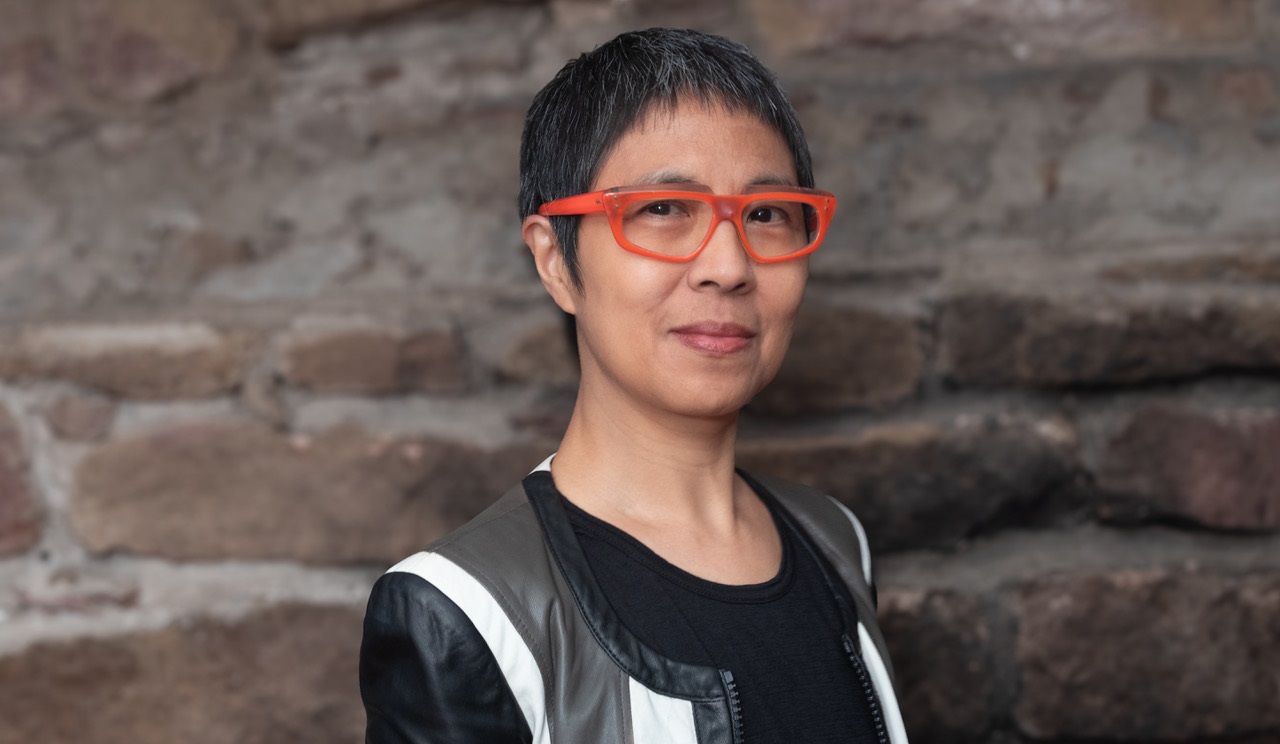 |
|
| Lana Lin (photo: H. Lan Thao Lam) |
|
Lana Lin is a writer, artist, and filmmaker living in New York and Connecticut. The Autobiography of H. Lan Thao Lam (Dorothy, a publishing project) is her literary debut and was longlisted for the 2025 National Book Award for Nonfiction. She is the author of Freud's Jaw and Other Lost Objects: Fractured Subjectivity in the Face of Cancer (Fordham, 2017), an outgrowth of her Ph.D. and four years of psychoanalytic training. Her films include The Cancer Journals Revisited (2018), a recitation of Audre Lorde's memoir/manifesto, and Stranger Baby (1995), an experimental work that explores "the alien" in its terrestrial and extraterrestrial senses. Her collaborative mixed media projects (with Lan Thao Lam as "Lin + Lam") have been exhibited in art and educational spaces around the world. She has been awarded fellowships from New York State Council on the Arts, New York Foundation for the Arts, Civitella Ranieri Foundation, and four residencies at MacDowell since 1996.
Handsell readers your book in 25 words or less:
Combining memoir, social criticism, and conceptual art, The Autobiography of H. Lan Thao Lam responds to a modernist classic with its own queer love story.
On your nightstand now:
In the nightstand of my mind: Gertrude Stein: An Afterlife, Francesca Wade's magisterial account of Gertrude Stein's and Alice B. Toklas's intertwined lives and the legacy of Stein's work. I am especially moved by the depiction of Toklas's almost obsessional devotion to her life (and afterlife) partner.
The Book of Salt and Bitter in the Mouth by Monique Truong. I've read The Book of Salt before, but in preparing for a conversation with her at my book launch, I re-read it. It's an inspired approach, to get inside historical figures and invent their inner lives. It hews pretty closely to what I know about Gertrude Stein's and Alice B. Toklas's lives, so closely that I'm still trying to figure out what bits are made up. Bitter in the Mouth is such a delightful discovery. Another incredibly original premise drives the narrative with its main character gifted with synesthesia. An Asian American character who is not primarily defined as such and whose racial heritage is not immediately apparent is an unusual find and so welcome.
Danielle Dutton's Prairie, Dresses, Art, Other was part of my summer reading and it continues to bubble up in my mind. Its collage-like, anecdotal, whimsical, and experimental nature is right up my alley. It's everything I want my writing to be: uncanny bricolage, blurring fiction and nonfiction, defying expectations, and inventing its own new forms. I am incredibly fortunate to have had such a brilliant writer as an editor.
Favorite book when you were a child:
I identified with Ludwig Bemelmans's Madeline and Beverly Cleary's Ramona the Pest. I pored through every Peanuts book I could find and Maurice Sendak's Where the Wild Things Are haunted my imagination. I adored A Wrinkle in Time and wrote to Madeleine L'Engle for a school assignment, but she never wrote back.
Your top five authors:
I'm going to interpret this impossible question as five authors who have had an enduring impact upon me:
Toni Morrison because who can beat the perfection of Beloved? I read it now with students in a course on the uncanny; Lydia Davis's precise concision and deadpan humor is unmatched; the immense beauty and pain of Christina Sharpe's prose leaves me breathless; Octavia Butler's world-building capacity is awe inspiring; Jane Bowles's quirky, inimitable blend of pathos and humor captivates me.
Book you've faked reading:
I got an A on an essay exam on Portrait of an Artist as a Young Man by James Joyce but never finished it.
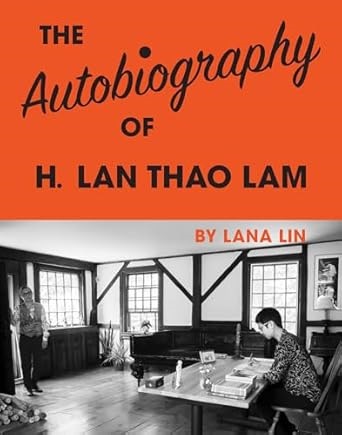 Book you're an evangelist for:
Book you're an evangelist for:
The closest I come to being an evangelist is as a professor. I teach Freud and try to convince students he's fun. People who haven't read Freud don't know how compellingly strange he/his writing/his ideas are. Beyond the Pleasure Principle and The Uncanny are kind of mind-bogglingly weird. I admire authors who think aloud on the page, especially those willing to expose all their contradictions and uncertainties, as Freud does.
Book you've bought for the cover:
I picked up a 1984 Penguin edition of Shirley Jackson's We Have Always Lived in the Castle because the face on the cover had been sliced out with an X-Acto knife. The cover blurb from the New York Times reads: "A witch's brew of eerie power and startling novelty." It was as if the previous book owner and reader had acted out a visceral response to the text.
Book you hid from your parents:
None. They don't care what I read.
Book that changed your life:
Maxine Hong Kingston's The Woman Warrior was especially meaningful to me. It was the first book I read by an Asian American author about Asian girls and women. It modeled the possibility not only of writing and making art, but also of dreaming and something beyond surviving. I felt I had literally no examples of this growing up as Asian American in a Midwestern suburb in the 1970s and early '80s. I probably read it in when I was in high school, but it wasn't assigned in class. My experience with it felt very private.
Favorite line from a book:
I'm going to interpret this as the favorite line from a book I have recently encountered:
"One enters a room and history follows; one enters a room and history precedes. History is already seated in the chair in the empty room when one arrives. Where one stands in a society seems always related to this historical experience. Where one can be observed is relative to that history. All human effort seems to emanate from this door. How do I know this? Only by self-observation, only by looking. Only by feeling. Only by being a part, sitting in the room with history." --Dionne Brand, A Map to the Door of No Return: Notes to Belonging
Okay, it's more than one line. My favorite is probably the first, but the power of the first line derives from the rest of the paragraph.
Five books you'll never part with:
The Weather in Proust by Eve Kosofsky Sedgwick because it was given to me by Hal Sedgwick and I will treasure it as one treasures a gift from someone one loves but whom one has never known.
The Cancer Journals by Audre Lorde because it came to me when I needed it and continues to come to me, to return, and to return again. I have the 1982 second edition and the 2006 special edition.
Even though we shared one bookcase for over a decade, my partner and I both would not part with our copies of Dictee by Theresa Hak Kyung Cha; one was more faded than the other. It has been interesting to see how they both age.
The Autobiography of Alice B. Toklas by Gertrude Stein. The cover of my 1960 Vintage edition has detached from the spine. I have to carry it in a bag to keep its pieces together.
My Sister's Hand in Mine: The Collected Works of Jane Bowles, gifted to me in 1990, is precious to me. There's something poignant in 476 pages containing a person's life's work, yet those 476 pages are worth aspiring toward.
Book you most want to read again for the first time:
It would be a thrill to read Virginia Woolf's Orlando again, to encounter that astonishing gender transition before the movie, before the Internet, as I did, for the first time.
Book Candy
Book Candy
The Public Domain Review featured "a devilish dive into our archives to unearth some supernatural treats" with its Halloween Reader.
---
"Spooky season, but make it cozy: 13 newly-published reads" were recommended by the New York Public Library.
---
The Morgan Library's Facebook page showcased an 1845 letter from Edgar Allan Poe to John Augustus Shea containing the earliest surviving portion of "The Raven" and the only manuscript intended for a printer. And Open Culture exhumed 19 theories on what caused Poe's death.
Rediscover
Rediscover: Baek Sehee
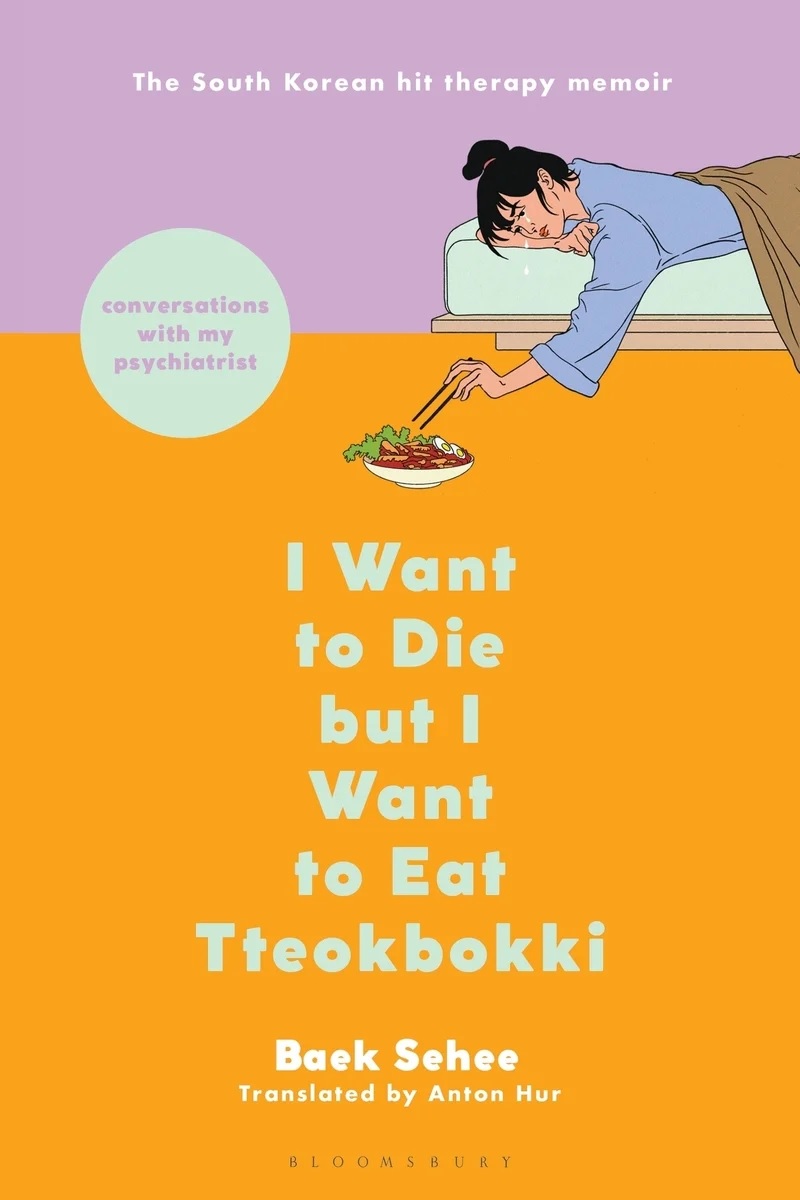 Baek Sehee, the bestselling South Korean author "whose frank conversations about therapy and mental health helped her become a cultural phenomenon in her home country and beyond," died October 16, the New York Times reported. She was 35. Baek was best known for her memoir, I Want to Die but I Want to Eat Tteokbokki, "a deeply personal account of her struggles with depression and anxiety. (Tteokbokki is a popular Korean dish of rice cakes in a spicy sauce.)."
Baek Sehee, the bestselling South Korean author "whose frank conversations about therapy and mental health helped her become a cultural phenomenon in her home country and beyond," died October 16, the New York Times reported. She was 35. Baek was best known for her memoir, I Want to Die but I Want to Eat Tteokbokki, "a deeply personal account of her struggles with depression and anxiety. (Tteokbokki is a popular Korean dish of rice cakes in a spicy sauce.)."
Published in 2018, the book includes conversations that she had with her therapist, which she recorded, and essays that explored topics like sexism and self-doubt. I Want to Die "was embraced by a broad audience that was drawn to its frank discussion of mental health, especially in South Korea, where stigma and family shame around mental illness persist," the Times noted.
In a prologue, Baek wrote, "I realized that opening the dark part in my heart was a very natural thing, just like showing the bright part of it." The book was published in 25 countries and has sold more than a million copies worldwide. In 2019 she published a sequel, I Want to Die but I Still Want to Eat Tteokbokki, which explored her struggles with self-harm and suicidal thoughts.
Baek told PEN Transmissions in 2023 that the inspiration for the book came from someone who had commented on her blog, saying they were experiencing similar emotions, and felt relieved to know someone else was going through the same thing. "When they said it was like a light was shining into the darkness of their life, I was so surprised," she recalled. "All I'd done was be honest in public, but here was someone comforted by that."
Anton Hur, who translated Baek's book into English, posted on Bluesky: "The Korean organ donation authority reports that Sehee saved five lives through her donation of her heart, lungs, liver, and both kidneys.... But her readers will know she touched yet millions of lives more with her writing. My thoughts are with her family."
In a statement, her sister, Baek Dahee, said that Baek Sehee "loved writing, connecting with others through writing and nurturing hope in other people."

